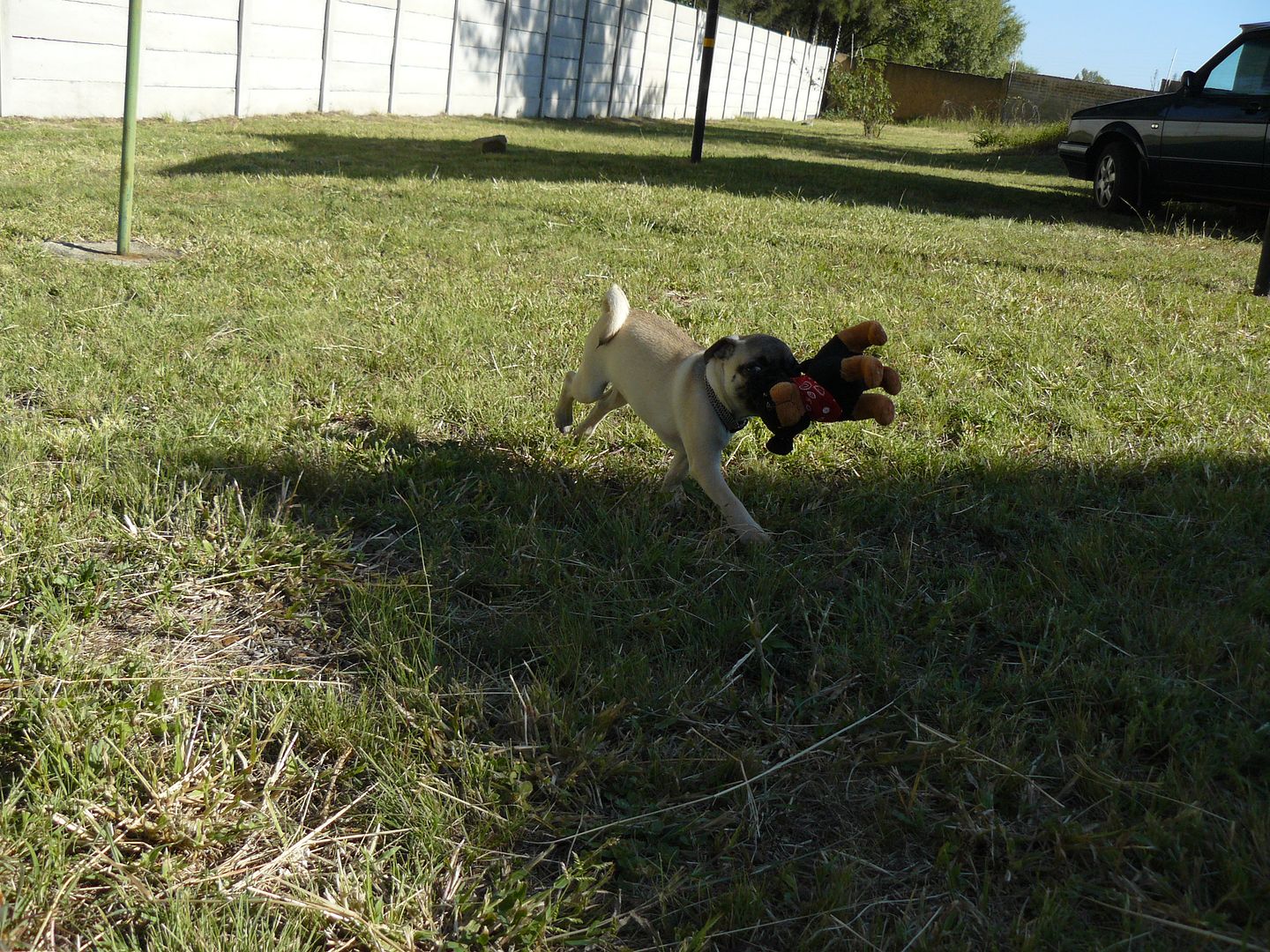My first pug, Zakkie, was a very typical pug. He was my childhood dog, and at the ripe old age of 13, deaf and going blind, he died. He was the friendliest creature, dumb as a rock (unusual for a pug, but that was ok, he was loved regardless), full off snuffly grunty noises. He was the most wonderful dog - except -
He could not make it half a block of walking without having to lie down. His breathing would become so laboured that he found the nearest cool spot in the nearest available bush and plopped down. He refused to move from that spot, and had to be carried if you want to keep walking. A recent visit to a pug rescue social event confirmed that most pugs are like that - generally happy if languid dogs. Not Talos. She runs with the terriers, climbs giant agility obstacles with ease and aplomb, and is pretty much always ready to get up and get going on one thing or another.
 |
| She's not crazy along the lines of the working breeds, mind you, if you were to imagine a very calm Jack Russel Terrier, that would be her. |
Essential to this question is a matter of definition - what would health mean?
This is not a simple question, especially since I want to take it to a broader inquiry than just two little pugs. In medical anthropology, this question bugs us a lot. Let's look at a few definitions - firstly, the nearly instinctive one - feeling good. Then, there is the biomedical one - a body that functions normally. Then there's the 'alternative' medicine one - a person that can function within his/her given social context. These definitions are often at odds with each other.
Let's look at the puggies to see why - Zakkie felt good for most of his life. He was simply too stupid to care, and I mean that in the fondest possible way. If he had food, snuggles and nap time, his life was complete (just please don't move the brick he used as a step to get into the house, or he'll have to be taught to use it all over again). So our instinctive, knee jerk reaction is that he's a healthy pug.
Biologically, though, we might have a very different opinion. His selective breeding that made him a bracycephalic dog, and his specific genetic make-up that made him a particularly stupid dog, are both causes for concern. Some even go as far as to say that breeding severely bracycephalic dogs are cruel, because they cannot run and play like other dogs can - it's like forcing a creature to live with asthma because you find the wheezing cute. The rest of the pug breed standard, cobbyness specifically, but the desire for a double curl tail and the resulting risk for malfomed backs are also 'to blame' for his inability to exercise with any stamina. He is clearly dysfunctional - and it is likely that if we ever felt it necessary that he would have been a candidate for surgery to 'fix' his breathing (reducing his palate, opening his nares, there's a whole host of options here - sometimes brilliantly successful, sometimes not).
Socially, Zakkie never had much contact with other dogs except the fox terrier he lived with, and much later a rescue my sister introduced. He and the foxie were very close, she mothered him as a puppy in a big way, but he had no skills interacting with dogs. The neighbour dog (an immense boerboel) was a constant reason to posture and fight. Could he function within his given social context as a pet dog? Sure, but only behind a fence.
Talos, on the other hand, is nowhere near as naturally content as Zakkie was. She's cautious of various things, and sometimes just plain scared - an emotion Zakkie only ever experienced once or twice in his life. She's clever, not just in the 'I can teach this dog things' clever, but in how she can figure things out (zips on bags containing treats, for example) and in how she tests her boundaries. She'd drag the brick over herself to get into the house. She's easily bored with an activity, I have to keep mixing it up or she loses interest. She can also focus wonderfully on a task, her ability to concentrate is A+. She also has a much easier time breathing, her longer, leaner frame giving her much less weight to carry per leg length. She'll never do well at a conformation show, though!
She's also fairly well socialised - yes, she's an only dog, but through puppy socialisation and regular interaction with dogs of every shape and size, she knows how to solicit play, and she knows when to back away from a grouch.
In summary, Zakkie would have been considered a healthy pug by people who met him, but not by vets. Talos, on the other hand, is likely to charm the vet, but not strangers so easily.
This extends to people as well - what is or is not considered health varies markedly. But more on that later :)
No comments:
Post a Comment